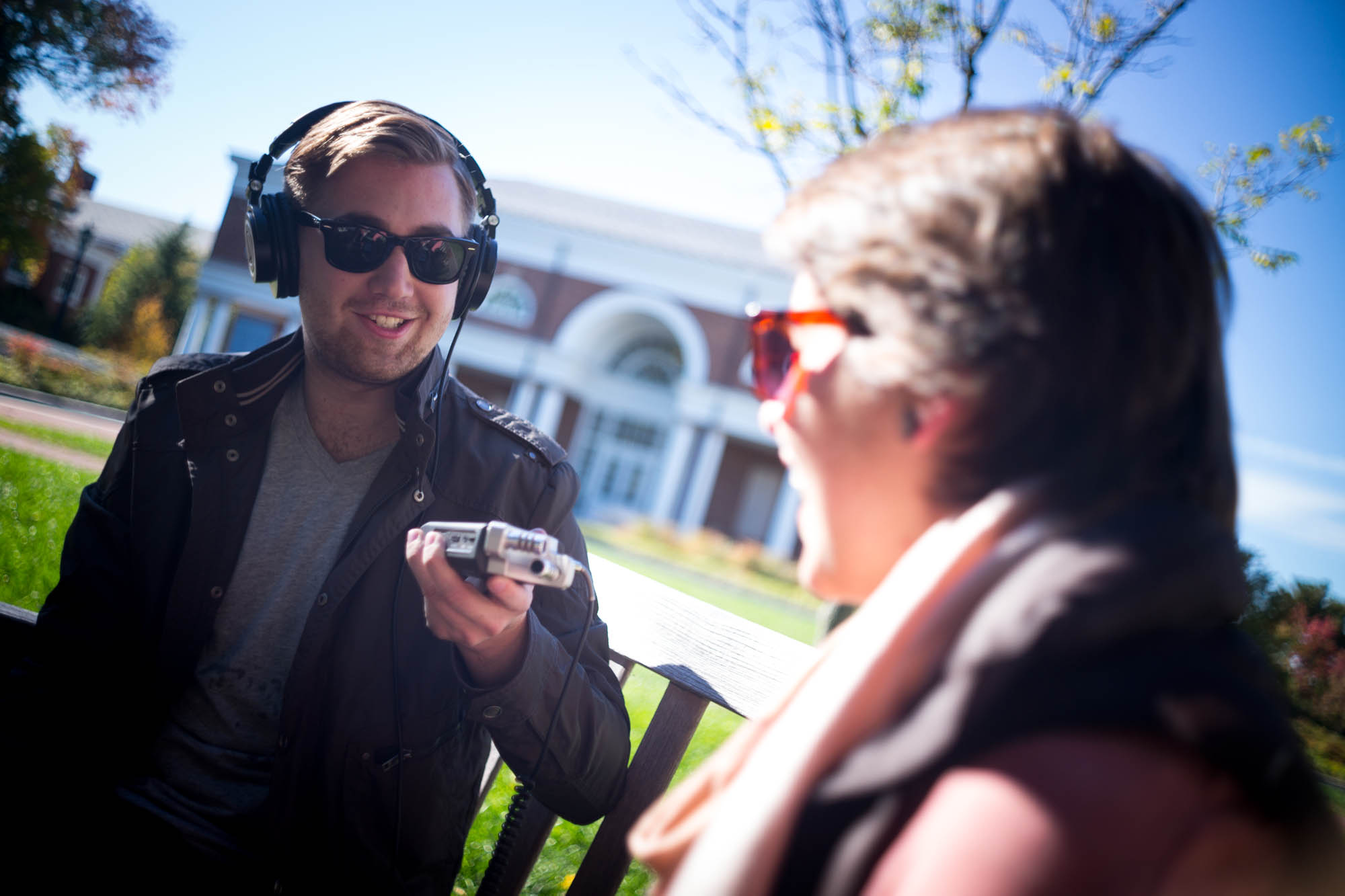From sound editing and mixing to the art of interviewing and storytelling, University of Virginia media studies students are learning all about what happens on the other side of the dial in Elliot Majerczyk’s new radio production course.
Majerczyk is an associate producer of “With Good Reason,” an award-winning public radio show produced by the Virginia Foundation for the Humanities that features leading scholars from the state’s colleges and universities talking about their expertise on a range of topics. He describes the course as a complement to the media studies department’s more theory-based curriculum, allowing students to use the creative and analytical skills they’ve gained in studying media to produce story pieces that they can add to their resumés and creative portfolios.
Students take on the role of radio journalists during the course. Each week, they are assigned a project involving a different type of radio story – from street interviews, known in the industry as “voice of the people” or “vox pop,” to recording “soundscapes,” clips with little narration that focus on capturing the atmosphere of a place in time.
To get started, students borrow voice recorders from the Clemons Digital Media Lab, interview students and professors across Grounds, and then write and produce narration to develop compelling stories. They use Hindenburg, a radio software system, to produce two- to four-minute clips.
“I think the students are surprised at the almost limitless creative options they have in creating pieces for radio,” Majerczyk said. “There is definitely a set of structures that are present in the creating a piece of radio; however, with those structures the students can create their own identity in terms of style, content, intent, editing and use of sound.”
He also remarked on how little financial outlay it takes to get started making stories; all you need is editing software and a microphone. “With as little as $200, you can create great radio in your dorm room and freelance your way into a career.”
The class has welcomed special guests lecturers such as NPR veteran Andrew Parsons, currently an associate producer for “BackStory with the American History Guys,” another popular program produced by the Virginia Foundation for the Humanities. During his visit, Parsons talked to students about the rules for voice recording in the field, with an emphasis on balancing background audio, capturing ambiance without distorting voices and creating seamless transitions.
For the heart of the story, the interview, Parsons emphasized patience, tenacity and coming up with good questions – in short, what to ask and how to ask it. Though students may have to talk to 17 people to get a good sound byte for a 90-second story, a strong quote can make all the difference in the success of a piece.
“I took this class because I’m interested in the technical side of media and learning how to engineer sound,” said O’Shea Woodhouse, a fourth-year media studies major and aspiring videographer. “I think courses like this are necessary for the simple fact that this is a more beneficial way to learn, because we’re learning and then we’re going to apply it into something practical that makes sense immediately. And it’s all on you – as much as you put in, that’s as much as you’ll get out.”
The class is part of the growing media studies department’s production-based offerings that help students develop practical, critical and analytical skills relevant to a wide range of careers. Other technical-based classes in its expanding repertoire include courses on digital publishing, database design, civic journalism, new media, film production and scriptwriting.
“The Department of Media Studies is always trying to expand its course offerings, and this includes expanding offerings that help students develop media-related technical skills,” said Hector Amaya, department chair and associate professor of media studies. “It is, of course, a challenge, as these courses require highly qualified instructors who need the support of labs or equipment.”
For their final projects, students will interview professors across Grounds about their favorite music selections, then will interweave the interview with samples of the songs to create a finished full-length story. The pieces will be aired on WTJU, U.Va.’s radio station, as a feature series.
“[The course] will bring everything together, in terms of learning how to edit and mix music,” Majerczyk said. “The goal is that students should be able to do a podcast easily, and then practice and continue. If they ever want to become a freelance radio journalist, they’ll have all the tools.”
If they decide to continue pursuing experience in radio, students can also take advantage of opportunities at WTJU and WUVA, local stations that feature student-run radio shows.
Media Contact
Article Information
October 28, 2014
/content/uva-students-become-sound-journalists-new-radio-production-course

